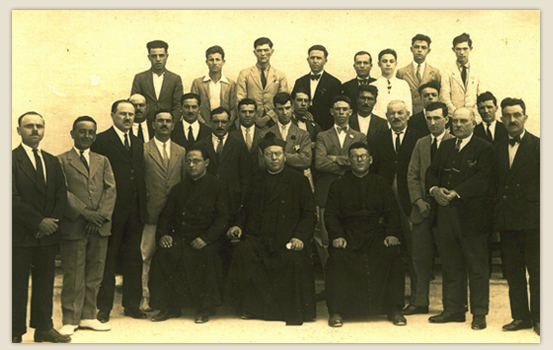| |
Catholic Teaching Day – 11th October
G. De Piro’s contribution in the teaching of
catechism in Malta at the beginning of the 20th
century.
Before the beginning of the 20th
century several attempts had been made in Malta
in favour of the promotion of catechism
teaching, but a lot had still to be undertaken:
many parishes lacked catechetical centres, and
books, especially in Maltese, were still rare.
In fact in 1912 Archbishop Peter Pace indicated
that there was still room for improvement: “The
first and most important duty is the teaching of
christian doctrine to the grown ups and the
children. The parishpriest and his assistant
will be able to better carry on this duty if
they seek the help of some other priest”. Four
years later Fr George Preca affirmed something
similar: “The teaching of catechism in the
parishes was not well organised.” Fr Alexander
Bonnici OfmConv., in Volume I of his hagiography
of Saint George Preca, confirmed this: “The
Island of Malta, because of the lack of
teaching, was going through a very bad time …
The teaching of religion, both for children and
grown ups could be a lot better.”
|
 |
|
Joseph De Piro with some catechists from
Oratory, Birkirkara |
Even in the parishes where some kind
of catechetical activity took place, the
situation was still poor. In Rabat, for example,
catechism classes existed even before 1908. We
know that during that year the parishpriest, Fr
Karm Sammut, had asked the Archbishop to
nominate Fr Anton Ebejer as director of
catechetical activities in the Parish. In spite
of this we know from witnesses in the Diocesan
Process of the Cause of Canonisation of Mgr J.
De Piro, that even in this Parish this ministry
was rather poor. In fact Anthony Scerri
testified that: “At that time we learnt
catechism for the First Holy Communion in the
Parish Church (Rabat) or some similar place, and
then nothing else.” Joseph Tonna almost repeated
the same thing: “… at Rabat, children were only
prepared for their First Holy Communion and
their Confirmation. Besides, lessons were given
there in makeshift classes in the church. One
could say that they lacked organisation.” Paul
Sammut confirmed the above: “I come from Rabat.
At first I used to attend catechism lessons in
St Paul’s Church or the Rabat Parish Church.
Catechism lessons, however, were not very well
organised here. Children were seated on a few
benches in the Church. For teacher there would
be some priest or some young man who frequented
this Church. Teaching was very poor: we learnt
everything by heart, mostly prayers and some
simple truths. Methods of teaching and
discipline were equally deplorable; teachers
were very strict, often using their belts to
beat children who misbehaved during lessons.”
De Piro’s personal contribution - In Mtarfa,
a Rabat suburb
If Rabat was lacking in well
organised catechetical activities, much less
were the small suburbs that surrounded it, like
Mtarfa. De Piro’s charism to evangelise did not
allow him to remain passive: he realised what
the situation was, knew what had to be done, and
took action. This was attested to by Mr
Christian Scerri, a witness: “When I used to
meet him (the Servant of God) on the bridge
going to Mtarfa for the catechism classes,
because he taught catechism there… Yes, when he
found out that the children of this area did not
learn any catechism, he started going there
himself. And he was a Monsignor already!”
The above testimony implied that the
Servant of God undertook this evangelisation
ministry when he was already burdened with lots
of responsibilities! We do not know which
specific years Scerri was referring to, but if
we consider that De Piro became Monsignor in
1911, by that time he was already Director of
Fra Diegu Institute, which had something like
138 girls in it. The previous year, in 1910, he
had just started his Missionary Society. Its
members depended on him for all the aspects of
their life, whether human, academic or
spiritual. And, De Piro went to Mtarfa on foot.
This meant some half hour walk! Not to mention
the fact that especially in those days the
Maltese would have never imagined a monsignor
teaching catechism to the small children of
simple farmers. More and more was this not
conceived by the Monsignori themselves. It was
considered a lot downgrading for these
dignitaries! Besides, Monsignor De Piro came
from a noble family, and therefore himself a
noble!
Editor’s note:
De Piro
contributed personally towards the teaching of
catechetics even in the Church’s charitable
institutes.
De Piro’s contribution through his Society:
All the members, but especially the brothers,
since the beginning of the Society.
Preparation of boys … for First Holy Communion
and Confirmation … and even further than this.
A system more organised than elsewhere.
A better pedagogical system.
De Piro gave his support with his own physical
presence.
Reference: Tony Sciberras, History of
Catechetics in Malta, Malta, 2008.
|
|